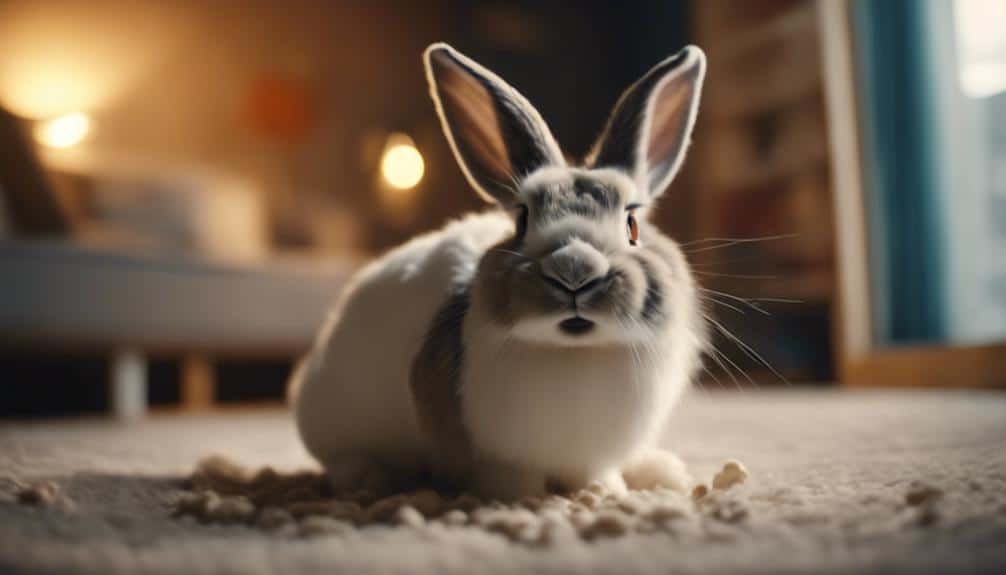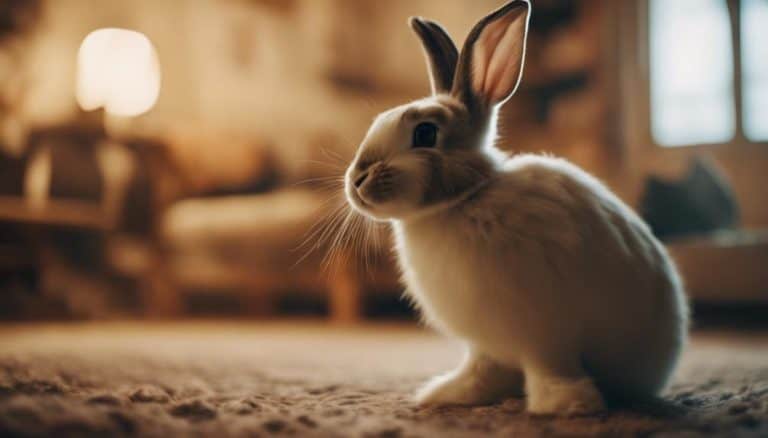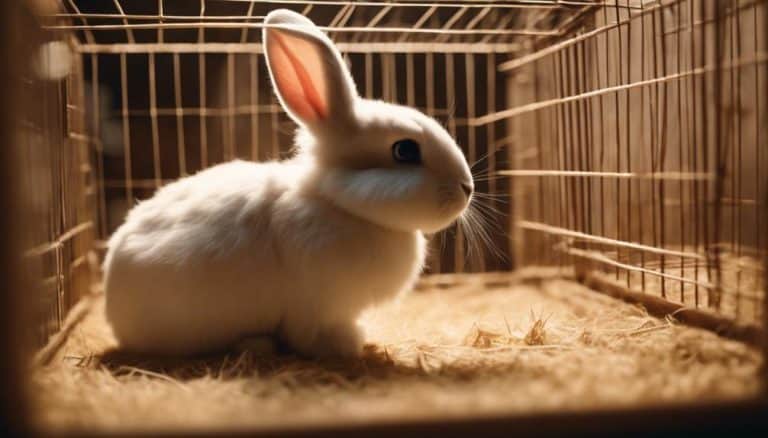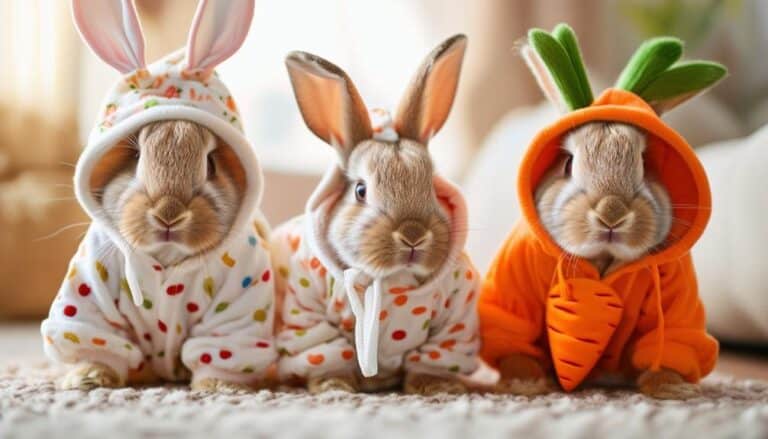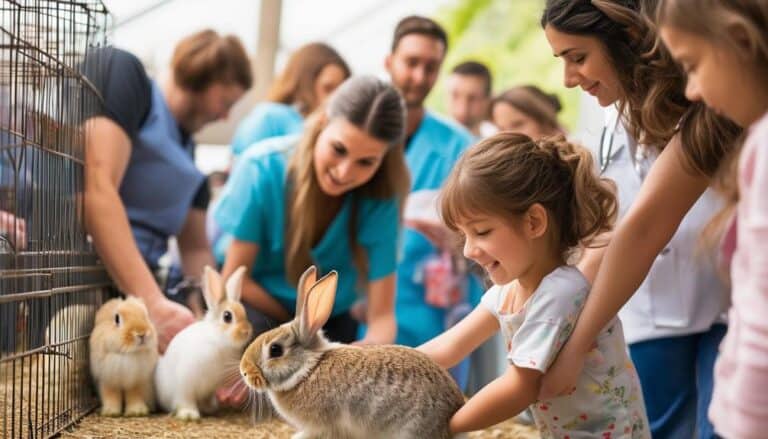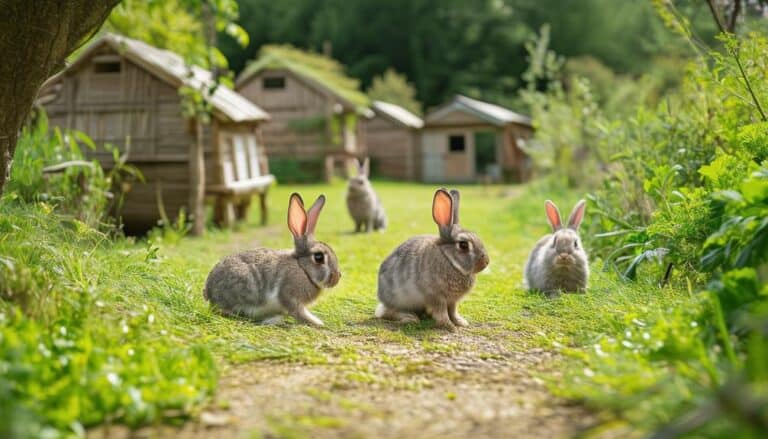Understanding Why Your Pet Rabbit Is Making Grunting Noises
When your pet rabbit starts making grunting noises, you might wonder what they’re trying to communicate. These sounds can indicate a range of issues, from discomfort and pain to territorial behavior or even excitement during feeding times.
Observing any changes in their appetite, grooming habits, or environment is crucial to pinpointing the cause. Additionally, understanding their body language can provide further clues.
So, how do you decode these signals and guarantee your rabbit’s well-being? Let’s explore the potential reasons behind this vocalization and how you can effectively respond.
Common Reasons for Grunting
Rabbits grunt primarily due to feelings of discomfort, unhappiness, or as a territorial warning. When you hear your rabbit grunting, it’s important to take into account the context and possible triggers.
Grunting can be a manifestation of physical discomfort or pain, often accompanied by growling or hissing. For instance, if your rabbit is grunting while being handled, it might be experiencing discomfort due to improper handling techniques or an underlying injury.
Unhappiness is another common trigger. Rabbits are sensitive creatures, and environmental stressors like loud noises, new pets, or changes in their habitat can elicit grunting. If your rabbit grunts when you approach its living space, it might be expressing unhappiness or stress.
Territorial warning is also a significant reason for grunting. Rabbits are naturally territorial animals, and they may grunt to warn you or other animals to stay away from their space. This behavior is particularly evident if the grunting occurs near their cage or favorite resting spot.
Understanding these common triggers for grunting can help you address your rabbit’s needs more effectively. Pay close attention to their body language and environment to better interpret the meaning behind their grunting behavior.
Grunting During Feeding
When your rabbit grunts during feeding, it can signal hunger-induced vocalization, indicating enthusiasm for food.
You might also observe territorial feeding behavior, where grunting serves to communicate dominance over their meal.
Additionally, these vocalizations can reflect food preferences, helping you understand which foods your rabbit enjoys most.
Hunger-Induced Vocalization
Grunting during feeding time often signifies a rabbit’s enthusiasm and anticipation for their meal. When your rabbit grunts at feeding time, it’s usually a clear sign of their keenness and excitement for food. This vocalization is a natural behavior indicating that your rabbit is hungry and looking forward to eating. By observing this behavior, you can gain valuable insights into your rabbit’s feeding habits and overall well-being.
Grunting is a common way for rabbits to express their desire for food. It’s their way of communicating with you, letting you know they’re ready for their meal. This behavior is generally a positive expression of hunger and should be seen as a healthy sign of your rabbit’s appetite. Regularly noticing these vocalizations can help you better comprehend your rabbit’s nutritional needs and make sure they’re getting fed appropriately.
If your rabbit’s grunting behavior changes suddenly or becomes excessive, it could indicate other issues, such as stress or discomfort, which may require further investigation. However, in most cases, grunting during feeding is simply a happy, enthusiastic sound that showcases your rabbit’s anticipation for their favorite time of day.
Territorial Feeding Behavior
Many rabbits exhibit grunting during feeding as a display of territorial behavior, signaling ownership and dominance over their food. This vocalization serves as a clear communication cue, indicating the rabbit’s intent to establish and maintain control over its immediate feeding environment.
When your rabbit grunts while eating, it’s asserting its possessiveness, marking its territory to prevent perceived intrusions from other animals or humans.
Territorial behavior in rabbits is an instinctual response, deeply embedded in their nature. Grunting during feeding illustrates this response vividly, with each grunt acting as a boundary-setting mechanism.
By vocalizing in this manner, your rabbit isn’t only protecting its food but also reinforcing its social hierarchy. This behavior can often be observed when multiple rabbits share a living space, where grunting becomes a tool to assert dominance and establish a pecking order.
Understanding these grunting noises helps you better interpret your rabbit’s actions and emotional state. Recognizing that grunting is tied to ownership and dominance over food allows you to respect your rabbit’s need for space and security during feeding times.
This knowledge fosters a harmonious environment, ensuring that your rabbit feels safe and understood.
Food Preference Communication
Beyond asserting dominance, rabbits also use grunting during feeding to communicate their preferences and excitement for specific foods. This behavior can be an insightful indicator of what your rabbit enjoys most. When you observe grunting at feeding time, it’s often a sign of enthusiasm or anticipation for a favored treat or meal.
Rabbits are known to grunt louder or more frequently when presented with foods they particularly enjoy, making this a valuable form of communication regarding their food preferences. By paying close attention to these vocalizations, you can tailor your rabbit’s diet to enhance their dietary satisfaction. Documenting which foods elicit grunting can help you better understand their likes and dislikes.
This knowledge not only improves feeding time but also promotes a happier, healthier pet by ensuring they’re consuming foods they enjoy. Moreover, contextual observation is important. Note the consistency and context of the grunting: does it occur more with fresh vegetables, specific fruits, or certain pellets? Identifying these patterns can offer deeper insights into their preferences.
Therefore, understanding and interpreting your rabbit’s grunting during feeding can greatly enrich their overall well-being and strengthen your bond with them.
Interpreting Body Language
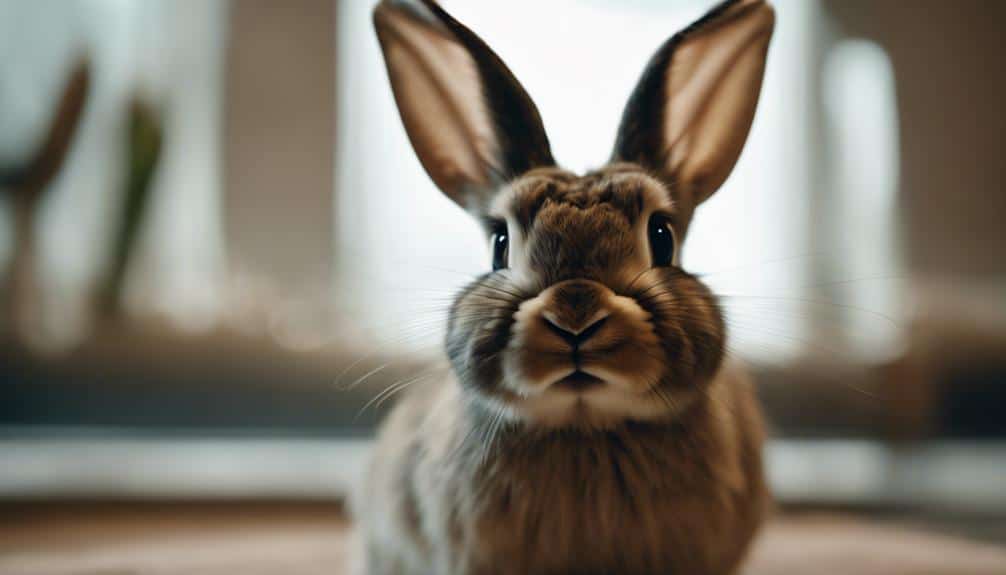
When interpreting your rabbit’s body language, closely observe their ear positions and tail movements, as these can provide critical insights into their emotional state. Look at the ear position first; relaxed, raised ears usually indicate that your rabbit is at ease, while flattened ears may signal discomfort or fear. Coupled with grunting, these signs can indicate various emotional states, including aggression.
Tail movement also plays a significant role. If your rabbit’s tail is tucked tightly against their body, they might be feeling threatened. Conversely, a more relaxed tail often suggests they’re comfortable.
To better understand your rabbit’s body language, consider the following:
- Ear Position: Raised ears indicate calmness, while flattened ears suggest fear or aggression.
- Tail Movement: A tucked tail can signal fear, whereas a relaxed tail shows comfort.
- Grunting: Often accompanies signs of annoyance or aggression, especially if paired with lunging or biting.
- Thumping: A thumping hind leg while grunting indicates warning or irritation.
Combining these body language cues with vocalizations like grunting allows you to comprehensively assess your rabbit’s feelings. This awareness guarantees you can provide a safe and nurturing environment, respecting your rabbit’s need for freedom and comfort.
Grunting and Human Interaction
Understanding the nuances of grunting during human interaction can greatly enhance your communication with pet rabbits. Grunting is often an indicator of underlying emotions such as affection or excitement. By paying close attention to the context, body language, and frequency of grunts, you can accurately interpret what your rabbit is trying to convey.
For instance, a rabbit may grunt when seeking your attention, indicating a desire for petting or treats. This behavior often reflects a positive emotional state and a strong rabbit-human bond.
When your rabbit grunts while being gently handled, it may signify comfort and trust, further emphasizing the affectionate nature of your interaction. Such responses are important for developing a mutual understanding and fostering a sense of freedom for your pet, where they feel secure and valued.
Additionally, grunting can serve as a reliable indicator of excitement during playtime or feeding, offering valuable insights into your rabbit’s emotional well-being.
Health Concerns
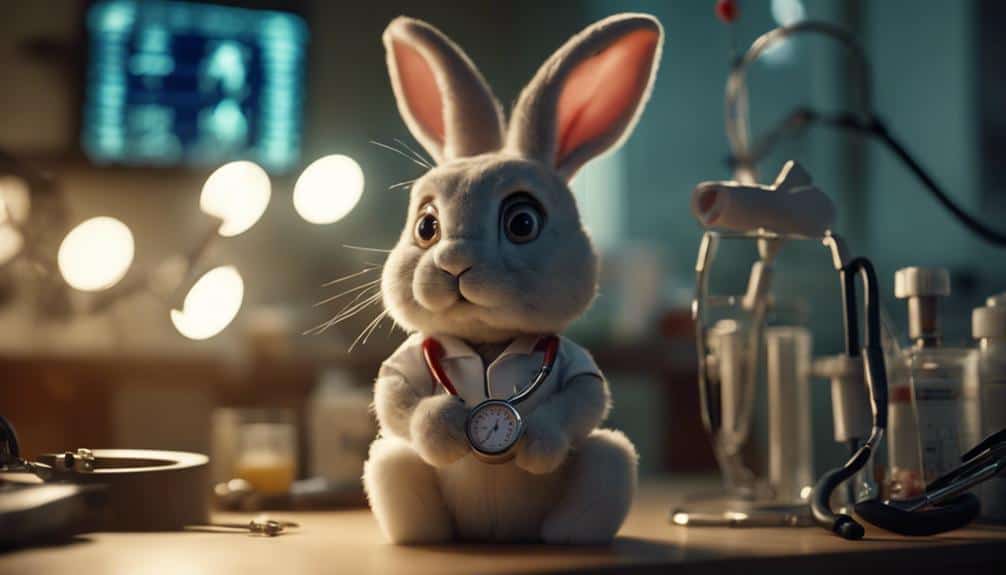
If your rabbit’s grunting is persistent and accompanied by other symptoms, it could indicate a serious health concern that warrants immediate veterinary attention. Grunting, combined with teeth grinding, often signals that your rabbit is experiencing pain or discomfort. Recognizing these signs early is essential for addressing any underlying health issues promptly.
Health concerns in rabbits can manifest in various ways, and being vigilant about changes in their behavior is vital. Pay attention to the following symptoms that may accompany grunting:
- Appetite changes: A decrease or complete loss of appetite can indicate gastrointestinal problems or dental issues.
- Activity level fluctuations: Lethargy or unusual hyperactivity can signal stress, pain, or other medical conditions.
- Altered grooming habits: Excessive grooming or a lack of grooming might suggest discomfort or skin issues.
- Teeth grinding: This can be a sign of severe pain, often linked to dental problems or other serious health concerns.
Consulting a veterinarian is imperative when you observe these signs. Regular health check-ups can help identify potential issues early, ensuring your rabbit’s well-being. Addressing health concerns promptly not only alleviates your pet’s discomfort but also prevents more severe complications.
Responding to Grunting
When your rabbit grunts, assess their environment to identify any potential stressors or triggers.
Make sure your rabbit is properly socialized, as this can greatly impact their comfort and behavior.
Assessing Rabbit’s Environment
Grunting in rabbits often indicates stress or discomfort, so it’s important to carefully evaluate their environment for any potential triggers. Start by examining rabbit noises, particularly grunting noises, as they can signify underlying issues.
When evaluating your rabbit’s environment, consider these aspects:
- New Objects or Changes: Identify any recent additions or alterations to their space. New furniture, toys, or even seasonal decorations can be stressors.
- Other Animals and People: Check for new pets or visitors that might be causing anxiety. Rabbits can be sensitive to unfamiliar scents and sounds.
- Hiding Spots and Toys: Make sure your rabbit has enough hiding spots and engaging toys. A comfortable living area helps them feel secure and reduces stress.
- Interactions and Conflicts: Monitor how your rabbit interacts with other pets or family members. Conflicts or unwanted attention can lead to increased grunting.
Ensuring Proper Socialization
Addressing your rabbit’s grunting behavior through proper socialization techniques is essential for fostering a secure and trusting relationship. Initiate gentle interactions to alleviate any fear or discomfort your rabbit may experience. Approach your rabbit calmly, using slow, deliberate movements to avoid startling them. Creating a safe environment is vital; guarantee their living space is free from loud noises and sudden disturbances.
Understanding your rabbit’s individual triggers for grunting is key. Observe their behavior closely to identify specific stimuli that provoke grunting. Once you’ve pinpointed these triggers, you can tailor your socialization efforts to minimize stress and promote positive experiences.
Incorporate positive reinforcement to encourage desirable behaviors. Offer tasty treats or favorite toys when your rabbit responds calmly to socialization attempts. This not only shifts their focus but also builds positive associations with human interaction.
Consistency is essential. Regular, gentle interactions combined with a stable, safe environment will gradually reduce grunting episodes. Over time, your rabbit will learn to trust and feel secure in your presence, strengthening the bond between you.
Conclusion
Understanding why your pet rabbit is making grunting noises is essential for ensuring its well-being. By observing its behavior during feeding, interpreting body language, and considering human interactions, you can identify the root causes.
Always monitor for potential health concerns and create a stress-free environment. Responding appropriately to grunting can enhance your rabbit’s quality of life, emphasizing the importance of informed, evidence-based care for your furry companion.

